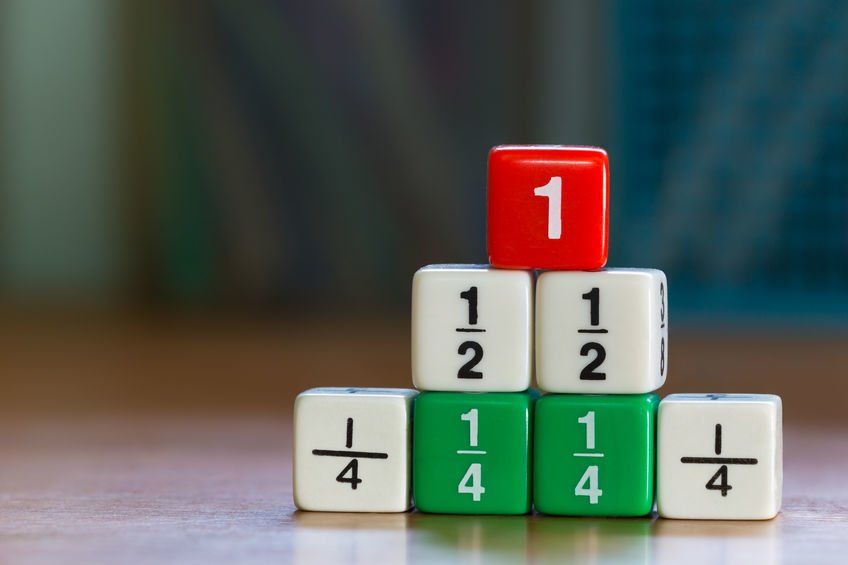Fractions form a fundamental building block of algebra, geometry and statistics

It is common knowledge that to be good at mathematics, each mathematical concept should build upon the previous one. In an ideal teaching environment, the teacher will only move on to the next concept, when all the children in the class completely understand the current concept.
Unfortunately, class sizes, time tables and syllabi force teachers to move on, even when many of the children are still struggling to grasp the current concept.
It therefore goes without saying, that some children will have gaps in their mathematics education that will have a definite influence on their future understanding of new concepts.
Recent research confirms that one of the major concepts that should be completely mastered is fractions. Fractions form the foundation for algebra in higher Grades, and later geometry and statistics. It is critical that your child should master the basic concepts of fractions to avoid future problems with maths.
In previous years, fractions were taught using pie charts (the ‘pizza method’), but this has proven not to be as effective as thought. Think about it, if you compare a pizza divided into 8 slices to one divided into 6 slices, the difference isn’t that obvious. But, if you use a number line or a fraction wall and show 1/8 and 1/6, the difference in size is much more obvious.
“In fact, according to the Wall Street Journal article, placing fractions on a number line in the correct order in third grade is a more important predictor of fourth-grade math performance than calculation skills or even the ability to pay attention.” Blythe Grossberg, https://www.thoughtco.com/
It is also important that no calculations with fractions should be attempted, if the concept of fraction value has not been established. Students should completely master the concepts of fraction value and composition before attempting any advanced fraction calculations.
Tips to help your child master fractions:
1. Teaching of fractions should be concrete. A few ideas:
Use an A4 board paper and divide, for example, one paper into 8 equal-sized rectangles and the other into 5 equal-sized rectangles. Use this to teach that the denominator (number DOWN under) determines the number of equal parts the whole is divided into. This will visually show the child that 1/5 is bigger than 1/8.
Immediately transfer this information to a number line, showing 1/5 and 1/8 on the line.
Now introduce the numerator (the number of equal parts we are working with NOW). Ask children to compare e.g. 2/5 with 3/8 to see which one is bigger.
2. Reinforce fraction-concepts in daily life
How many slices has the cake been divided into?
What fraction of the cake will you eat? What fraction is left over?
What fraction of the friends you invited to your party will be able to attend?
What fraction of the cars in the car park is white?
If your paving in the driveway is made up of identical sized paving tiles, use chalk to divide it into different fractions with different denominators.
3. Don’t ignore the problem
Fractions are introduced in Grade 3 and reinforced in Grade 4, but from Grade 5, children will move on to the next level, which includes addition, subtraction and multiplication of fractions. If your child is not on top of the basic concepts, spend time to ensure that he or she completely grasps the basics, before fractions become a nightmare.
Need help explaining Fraction Basics? Watch this tutorial video - Grades 3 to 5:
https://edpuzzle.com/media/5ede101afa258c3fa7cd6eec






